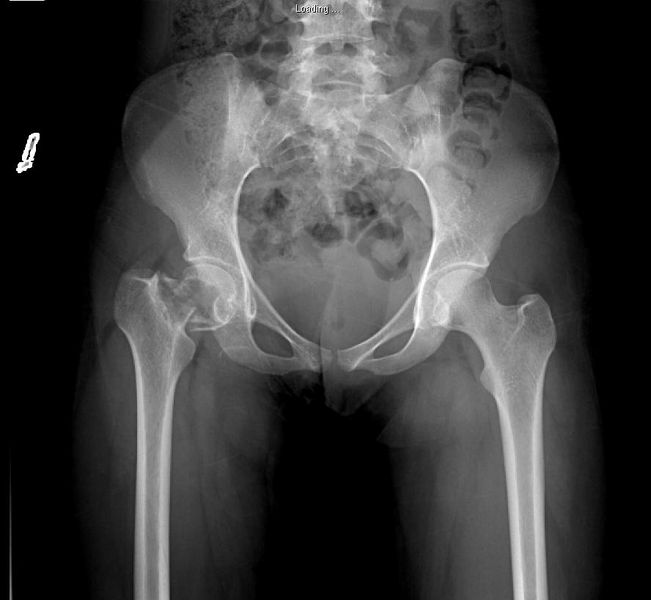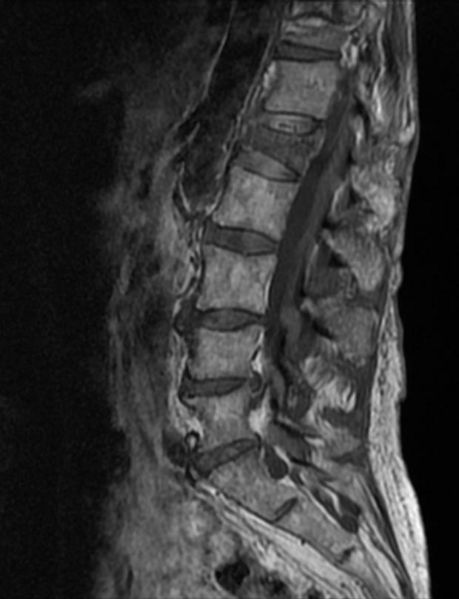Osteoporosis natural history
|
Osteoporosis Microchapters |
|
Diagnosis |
|---|
|
Treatment |
|
Medical Therapy |
|
Case Studies |
|
Osteoporosis natural history On the Web |
|
American Roentgen Ray Society Images of Osteoporosis natural history |
|
Risk calculators and risk factors for Osteoporosis natural history |
Editor-In-Chief: C. Michael Gibson, M.S., M.D. [1] Associate Editor(s)-in-Chief: Raviteja Guddeti, M.B.B.S. [2]
Overview
Osteoporosis can be complicated by the development of fractures. The prognosis is generally good and mortality from the disease will depend on the the type of fracture. The major type of fractures contributing to mortality in these patients are vertebral fractures and hip fractures.
Natural History
The symptoms of the disease typically develop in the sixth decade of life. The risk of getting osteoporosis increases proportionately with age. DXA bone densitometry is recommended every 2–3 years as a screening tool. The outcome is usually good with appropriate and timely usage of medications and with calcium and / or vitamin D supplementation. Persons who are elderly, who are taking medications which deplete calcium, who are thin or of caucasian or asian race and female, are at higher risk for osteoporosis. Having osteopenia, which is decreased mineral bone density, is also a risk factor for osteoporosis.
Complications
Disease can be complicated by the development of:
- Fractures - the hip and the vertebrae are among the most frequent sites of fracture

|

|
- DVT - a deep vein thrombosis can develop from prolonged immobility.
- Kyphosis (Dowager's hump)
- Restrictive lung disease
- Apart from risk of death and other complications, osteoporotic fractures are associated with a reduced quality of life due to immobility, and emotional problems may also arise as a consequence of this.[1]
- Drug side-effects:
- Bisphosphonates - esophagitis, osteonecrosis of the jaw, bone pain, muscle pain etc.,
- Raloxifene - thromboembolism, aggravates hot flashes, nausea, weight gain, depression, insomnia, leg cramps, rash
- Teriparitide - orthostatic hypotension, asthenia, nausea, leg cramps, hypercalcemia (if taken along with corticosteroids, thiazide diuretics, and calcium supplementation), must not be given to patients with Paget's disease or a history of osteosarcoma or chondrosarcoma
- Nasal calcitonin-salmon - bronchospasm, rhinitis, epistaxis, arthralgias
Prognosis
- The prognosis of the disease is good if the decrease in bone mass density is identified early, and the appropriate anti-osteoporotic medications are started.
- DVT caused by prolonged immobility from hip fractures is associated with a poorer prognosis among patients with disease.
| WHO category | Age 50-64 | Age > 64 | Overall |
|---|---|---|---|
| Normal | 5.3 | 9.4 | 6.6 |
| Osteopenia | 11.4 | 19.6 | 15.7 |
| Osteoporosis | 22.4 | 46.6 | 40.6 |
- The lifetime fracture risk in caucasian women is 18% for hip fractures, 16% for spine fractures, and 16% for wrist fractures. In men the same fractures account for 6%, 5%, and 3% respectively.
- More than half of all women, and one third of all men, have osteoporotic fractures in their lifetime.
- Men have a higher mortality from fractures when compared to women.
- The 6-month mortality rate following hip fracture is approximately 13.5%.
- Vertebral fractures, while having a smaller impact on mortality than hip fractures, can lead to severe chronic pain of neurogenic origin which is difficult to treat, as well as postural deformity.
References
- ↑ Brenneman SK, Barrett-Connor E, Sajjan S, Markson LE, Siris ES (2006). "Impact of recent fracture on health-related quality of life in postmenopausal women". J. Bone Miner. Res. 21 (6): 809–16. doi:10.1359/jbmr.060301. PMID 16753011.
- ↑ Cranney A, Jamal SA, Tsang JF, Josse RG, Leslie WD (2007). "Low bone mineral density and fracture burden in postmenopausal women". CMAJ. 177 (6): 575–80. doi:10.1503/cmaj.070234. PMID 17846439.